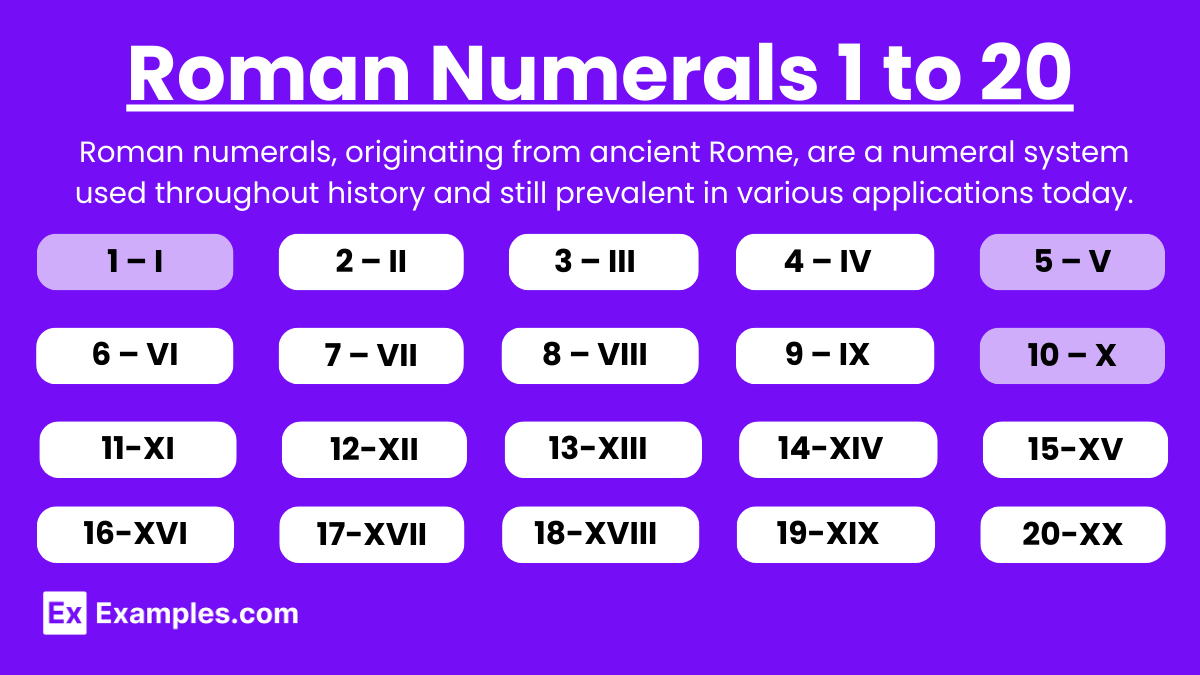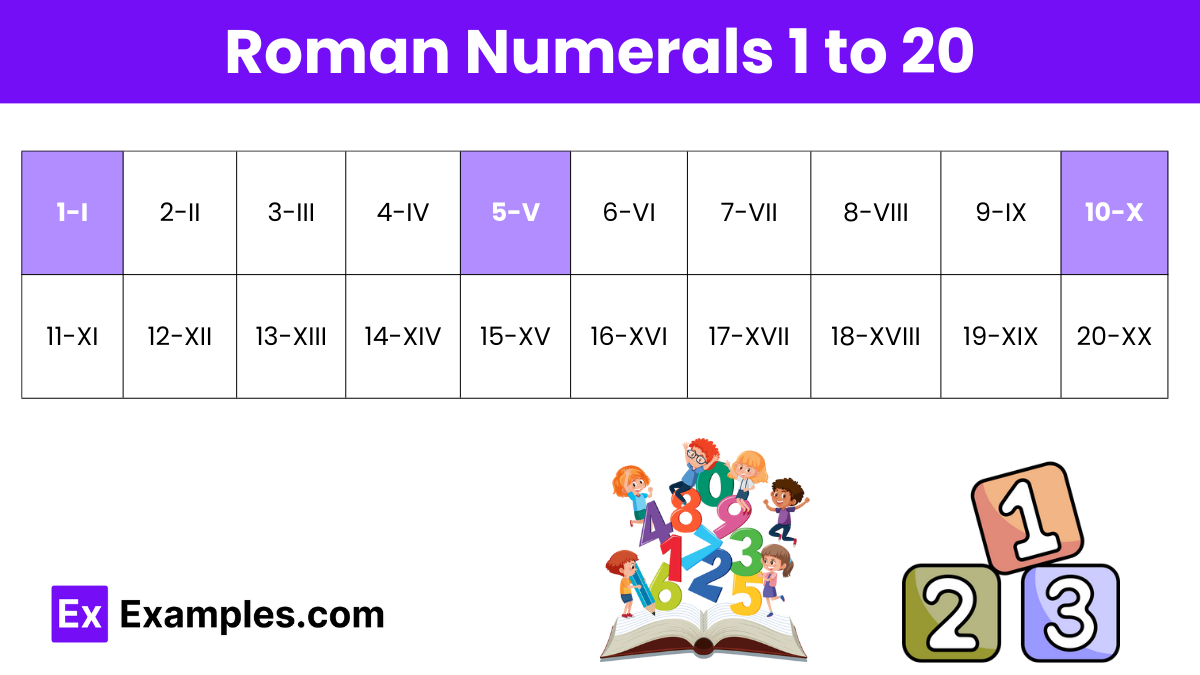What is the Roman numeral for 8?
VII
IX
VIII
X


Roman numerals, an ancient number system used by the Romans, are still prevalent today in various applications such as clock faces, book chapters, and movie sequels. The numerals from 1 to 20 are represented as follows: I (1), II (2), III (3), IV (4), V (5), VI (6), VII (7), VIII (8), IX (9), X (10), XI (11), XII (12), XIII (13), XIV (14), XV (15), XVI (16), XVII (17), XVIII (18), XIX (19), and XX (20). Understanding these symbols is essential for decoding historical documents, understanding classical literature, and recognizing their use in modern contexts. Learning Roman numerals also enhances cognitive skills by providing a different perspective on number representation and arithmetic.
Download Roman Numerals 1 to 20 in PDF

Download Roman Numerals 1 to 20 in PDF
| 1-I | 11-XI |
| 2-II | 12-XII |
| 3-III | 13-XIII |
| 4-IV | 14-XIV |
| 5-V | 15-XV |
| 6-VI | 16-XVI |
| 7-VII | 17-XVII |
| 8-VIII | 18-XVIII |
| 9-IX | 19-XIX |
| 10-X | 20-XX |
Understanding the rules for writing Roman numerals involves applying basic principles of addition and subtraction. Here are a few solved problems demonstrating these rules:
Understanding Roman numerals from 1 to 20 is fundamental for mastering this ancient numerical system. The numerals I, II, III, IV, V, VI, VII, VIII, IX, X, XI, XII, XIII, XIV, XV, XVI, XVII, XVIII, XIX, and XX represent the numbers 1 through 20, respectively. The system relies on specific rules of repetition, addition, and subtraction, where smaller numerals before larger ones indicate subtraction, and those after indicate addition. Familiarity with these numerals aids in interpreting various modern uses, such as in clocks and book chapters, enhancing both historical knowledge and numerical literacy.
Text prompt
Add Tone
10 Examples of Public speaking
20 Examples of Gas lighting
What is the Roman numeral for 8?
VII
IX
VIII
X
Which Roman numeral represents 13?
XII
XIII
XIV
XI
What is the sum of VII and III in Roman numerals?
VIII
IX
X
XII
What Roman numeral represents 15?
XV
XIV
XIII
XVI
Which Roman numeral is equal to 19?
XVIII
XIX
XX
XVII
What is the Roman numeral for 4?
III
IV
VI
V
Which Roman numeral represents 11?
X
XI
XII
IX
What is the Roman numeral for 6?
V
VI
VII
VIII
Which Roman numeral is equal to 7?
VI
VII
VIII
IX
What is the Roman numeral for 10?
IX
X
XI
XII
Before you leave, take our quick quiz to enhance your learning!

